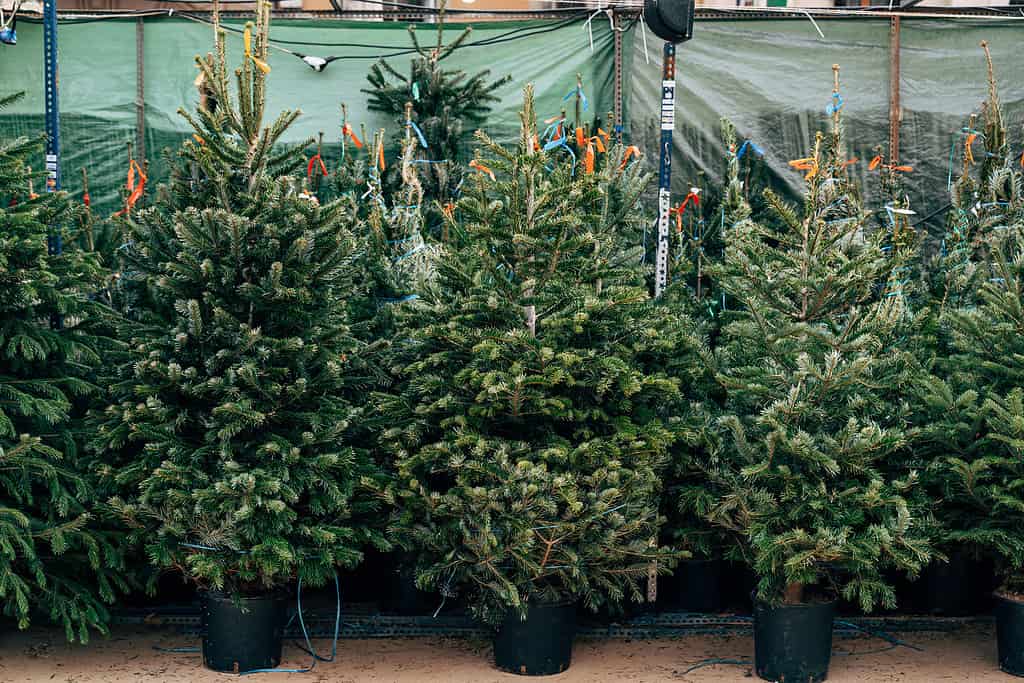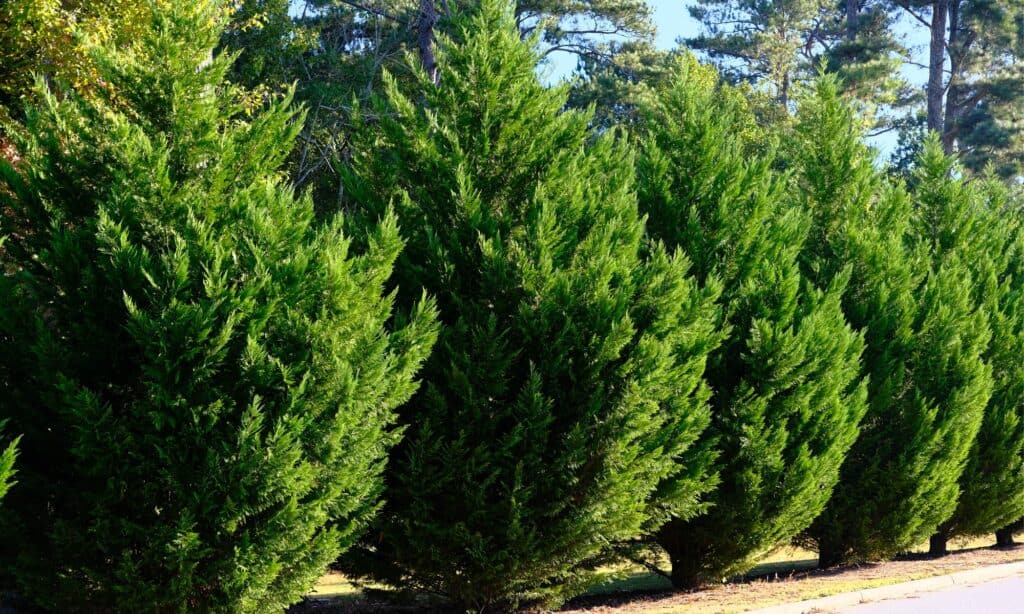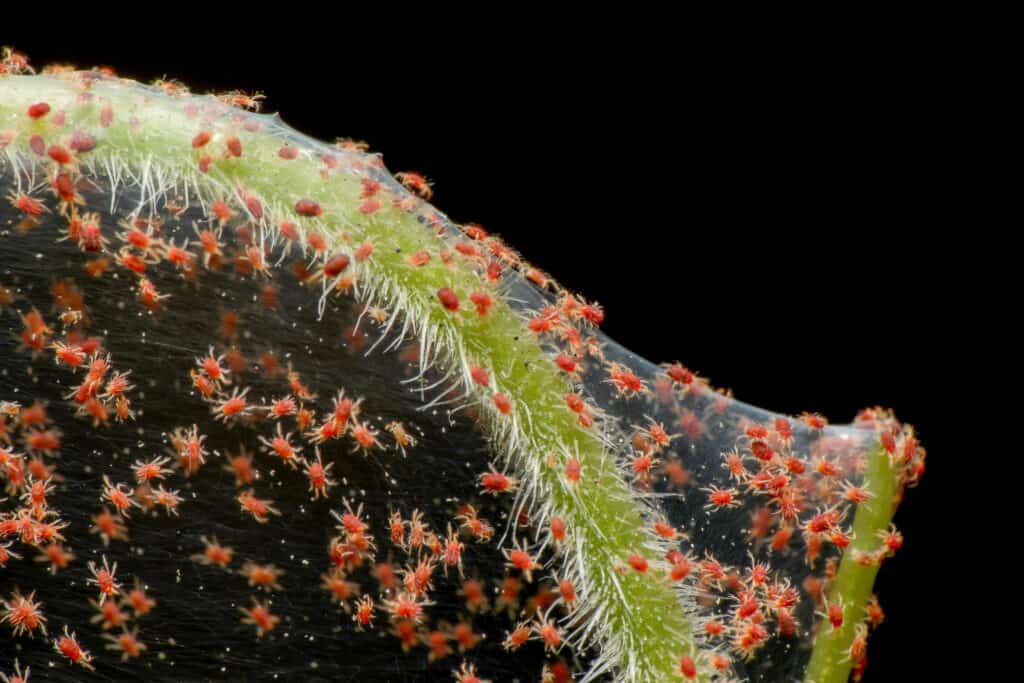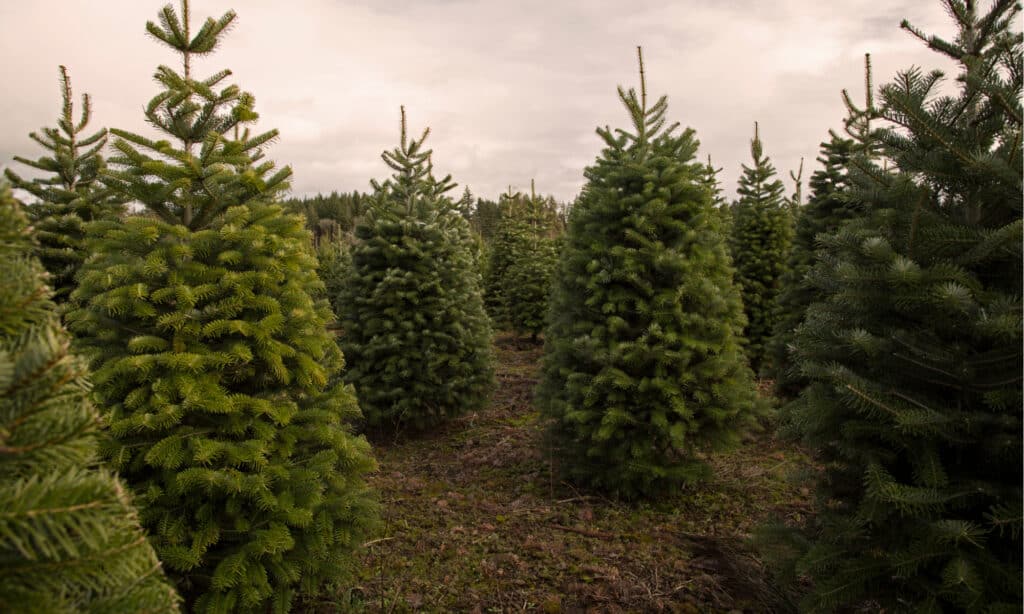Christmas comes once a year, but how many years does it take for your festive tree to reach its full glory? Let’s discover how long it takes to grow your Christmas tree and which is the fastest-growing species.
How Long Does It Take To Grow A Christmas Tree?

On average, it takes a Christmas tree six to ten years to reach seven feet tall.
©Nadtochiy/iStock via Getty Images
It takes six to ten years for a tree to grow to the typical height of six to seven feet tall, but the average Christmas tree is seven years old when it’s cut and sold.
Christmas trees are grown from seeds or by grafting. The most common method is from seed. It takes two to four years for a seed to germinate, sprout, and reach sapling size. This part of the growing process is generally done in a greenhouse, but when a sapling reaches a foot or so tall, it’s planted outdoors until it’s ready to cut down.
For the first four years, Christmas trees grow very slowly – above the soil, that is.
In the first few years of life, a Christmas tree puts energy into establishing a strong root system. It’ll reach approximately a foot tall after two to four years, and only then does it start to shoot upwards.
How Much Does A Christmas Tree Grow Each Year?

Balsam firs only grow around one foot each year.
©Sonia Horowitz/Shutterstock.com
When a root system is established, even the slowest Christmas trees can grow a foot each year. How fast they grow depends on environmental factors.
The fastest-growing Christmas trees are the Leyland Cypresses, Arizona Cypresses, Grand Firs, and Monterey Pines. A young tree of these species, with a strong root system and good growing conditions, can put on three to four feet a year.
Here are a few of the more popular Christmas tree species and how quickly they grow:
- Norway Spruce: After four years, a Norway Spruce grows two to three feet annually.
- Eastern White Pine: Scented Eastern White Pine is a favorite in U.S. homes and grows two feet a season
- Noble Fir: Upward-curving branches make noble firs excellent for hanging baubles. They grow one to two feet a year.
- Douglas Fir: Both Douglas Fir varieties grow one to two feet a year.
- Sugar pine: Popular Sugar Pine Christmas trees grow one to two feet yearly.
- Colorado Blue Spruce: One to two feet is this Colorado native’s maximum annual growth rate
- Fraser Fir: Slow-growing Fraser Fir grows less than a foot each year. It’s one of the slowest.
- Nordmann Fir: The U.K.’s favorite Christmas tree grows less than one foot yearly.
- Balsam Fir: Strongly scented Balsam Fir Christmas trees grow just under a foot annually.
Are Christmas Trees Pine Trees?

Leyland Cypress trees grow three to four feet per year.
©iStock.com/dbvirago
Christmas trees are evergreen coniferous trees with flat needles and cones containing seeds. They grow across the United States, Central America, Europe, North Africa and Asia. The ones we put in our homes for Christmas are usually a fir, a spruce, a pine, or a cypress.
Pine
Pine trees have clustered needles that look dense despite their fewer branches. Popular pine trees are Eastern White Pines and Scotch Pines, which take seven years to reach six to seven feet tall.
Fir
With flat needles that grow in spirals, fir trees are softer than pines and spruces. Popular firs include slow-growing Balsam Firs, Fraser Firs, and Noble Firs, which only put on less than a foot of annual growth.
Spruce
Spruces have four-sided needles and a distinctive Christmas tree pyramidal shape. Popular spruce species include Norway Spruce, White, and Blue spruce, all medium-rate growers at one to two feet a year.
Cypress
Cypress trees, including fast-growing three to four-feet-a-year Leyland and Arizona Cypresses, are popular in the United States’ Southwest. Their needles don’t drop, and they emit barely any scent. Cypress is a good choice for allergy sufferers.
How Are Christmas Trees Grown?

Red spider mites and balsam twig aphids infest growing Christmas trees.
©BirdShutterB/Shutterstock.com
Most Christmas trees start from seed in a growing greenhouse and stay there for up to four years until they reach a foot height and have enough durability to grow outdoors.
- Christmas trees are planted in rows on farms, and the spaces between them are regularly mown to keep grass competition to a minimum.
- Fertilizing happens in early spring and again in late summer.
- Pest control is often required for red spider mites and balsam twig aphids.
- Christmas trees are rarely watered once they’ve established a root system outside.
- When they reach saleable height, trees are cut and transported for sale.
- When their space is free, a new sapling is planted out.
Specialist Christmas tree farms are big business. Right now, 350 million Christmas trees are growing on farms covering 350,000 acres of land. They’ll be ready for harvest once they reach optimum height. On average 25-30 million trees are sold each year in the United States alone. Oregon, Michigan, North Carolina, Pennsylvania, Washington, and Wisconsin produce the most.
But Christmas tree farms are not just money makers. They protect forests from harvest. This is a huge benefit to the environment where old established trees provide habitats, food, and shelter for numerous plant and animal species, plus they sequester huge amounts of environment-destroying carbon.
What Makes A Christmas Tree Grow Fast?

Fast growing Christmas trees have fewer branches and needles.
©Jacquie Klose/Shutterstock.com
As we’ve seen, Christmas tree species grow at different rates, but there are a few aspects that determine how long it takes to grow. Farmers have to strike a balance between growing enough trees fast enough to make a profit, and ensuring the tree looks good enough to buy.
There’s no quick fix! Christmas trees take on average seven years to reach six to seven feet, and slow-growing popular Balsams and Nordmann’s take up to ten years. In general, a tree that grows quickly has fewer branches and less foliage. Bushy full trees take longer to reach full glory.
Appropriate soil type
Christmas trees like moderately fertile, well-drained soil. They don’t cope with soggy ground. Most Christmas trees can grow in what gardeners would consider poor soil due to their mountainous habitats.
Nutrition
Christmas tree growers fertilize trees twice a year to ensure healthy green growth.
Climate
Trees grow slowly in cold climates.
Sunlight
Most Christmas tree species enjoy full sun with plenty of light on their needles.
Water
Once established, Christmas tree species are fairly drought-proof, but with regular water they grow consistently and remain healthy.
How Old Is A Seven Foot Christmas Tree?

It takes at least ten years to grow a seven foot tall Balsam Fir Christmas tree.
©Gus Garcia/Shutterstock.com
Christmas trees are grown in all the states and right now millions are preparing for their big day. That could be at least seven years away!
On average it takes around six to ten years for a Christmas tree to reach six to seven feet tall, but it depends on the species.
A fast-growing Leyland Cypress is one of the quickest-growing Christmas trees. It puts on three to four feet a year. On the other side, we have Balsam Firs that grow less than a foot annually. It can take over ten years for a seven foot balsam fir to grace your living room.
The photo featured at the top of this post is © Cvandyke/Shutterstock.com
Thank you for reading! Have some feedback for us? Contact the AZ Animals editorial team.







